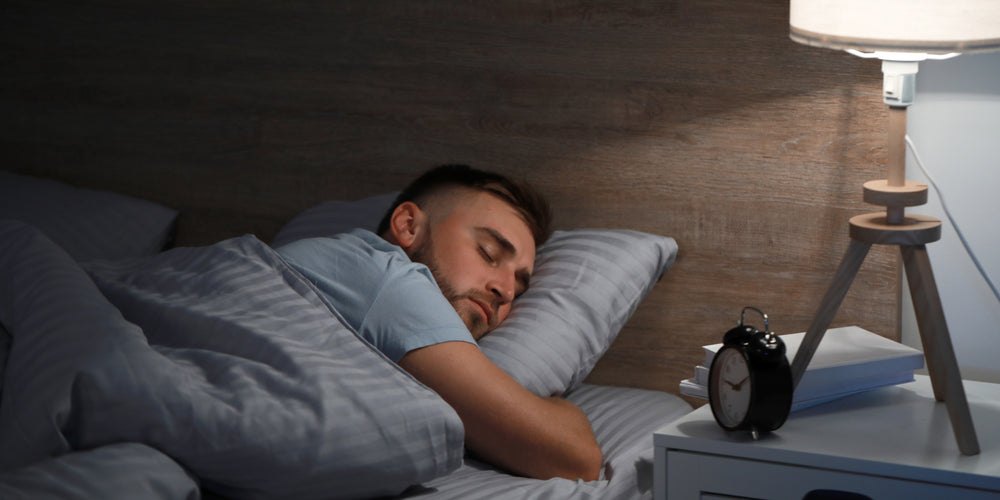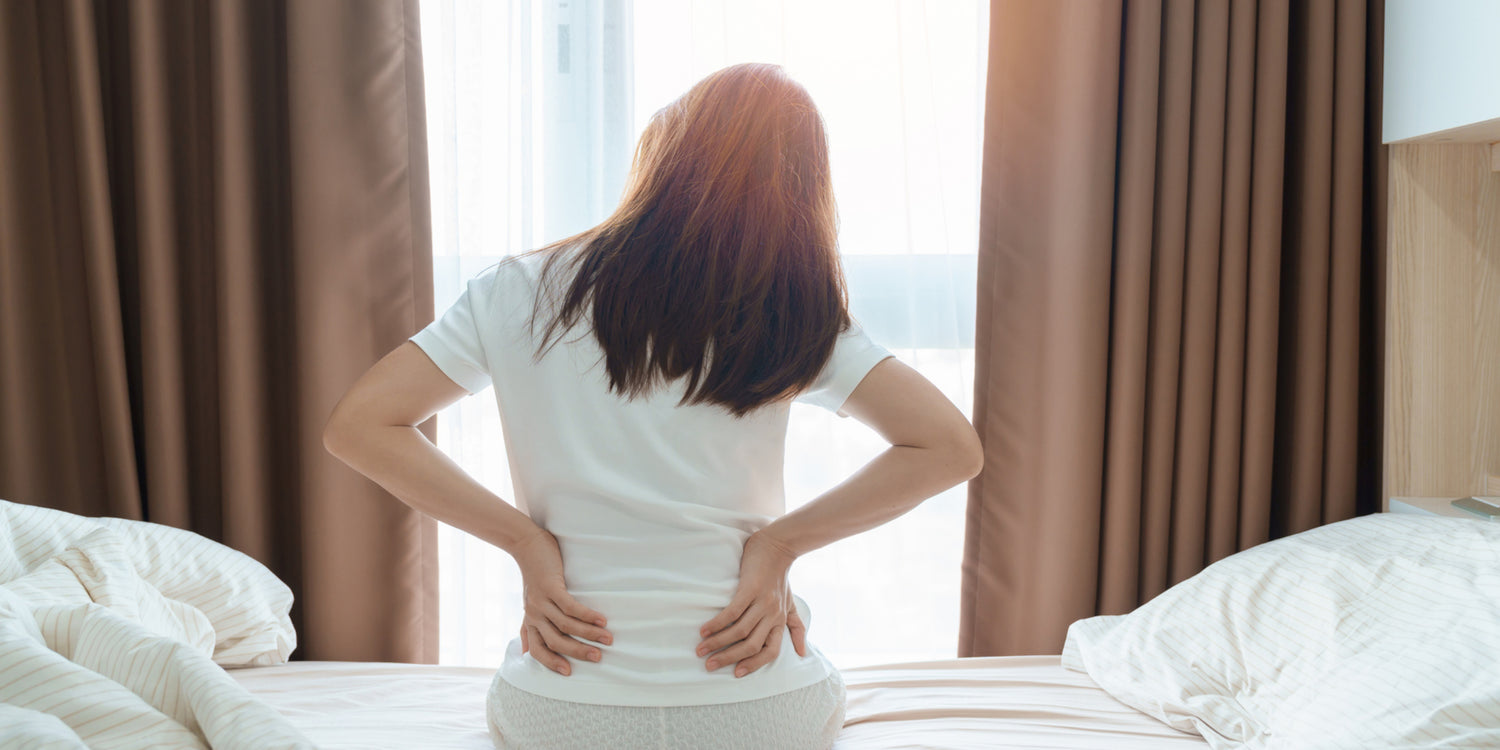Have you ever experienced the discomfort of a nagging backache that seems to linger no matter what you do? If so, you likely suffer from back pain.
Back pain is an incredibly common condition affecting millions worldwide, regardless of age or occupation. It can range from a mild annoyance to a debilitating condition that significantly impacts daily life.
Back pain can have a multitude of causes, and understanding these factors is the first step towards effective management and prevention. We'll explore the influence of lifestyle choices, physical activity, posture, and even psychological factors on the health of your back. By gaining a deeper understanding of these aspects, you'll be equipped with the knowledge to make informed decisions and take proactive measures to maintain a healthy spine.
If you're ready to embark on a journey of discovery, let's unravel the factors behind your aching back and pave the way towards a pain-free future filled with vitality and well-being.
What Is Back Pain?

Back pain refers to discomfort or pain experienced in the back region, which includes the upper back, lower back, and neck. It is a common condition that can range from mild to severe and may be acute or chronic in nature. Back pain can affect individuals of all ages and can impact daily activities and quality of life. It is important to seek medical evaluation to determine the underlying cause and appropriate treatment for back pain.
What Causes Back Pain?

One of the primary causes of back pain is strains and sprains, which occur when the muscles or ligaments in the back are stretched or torn. This can happen due to improper lifting techniques, sudden movements, or overexertion.
Accidents or injuries can also lead to back pain. A fall, a car accident, or any other traumatic event can cause damage to the spinal column, resulting in pain.
Pregnancy is another factor that can contribute to back pain. As the baby grows, the body undergoes hormonal and physical changes that can put strain on the back. The additional weight and shifting of the center of gravity can lead to discomfort.
Inflammation and degeneration of the spinal joints or discs can be a source of back pain as well. Conditions like arthritis or herniated discs can cause pain, stiffness, and reduced mobility.
Injuries to the intervertebral discs, which act as cushions between the spinal vertebrae, can cause back pain. These injuries can range from bulging discs to ruptured discs, and can result from wear and tear or trauma.
2 Types of Back Pain

Understanding the different types of back pain is essential for accurate diagnosis and appropriate treatment. In general, back pain can be categorized into two main types: acute and chronic. Acute back pain is characterized by sudden onset and typically lasts for a short duration, while chronic back pain persists for an extended period, often lasting 12 weeks or longer. Let's explore these two types in further detail.
-
Acute Back Pain
Acute back pain refers to sudden and temporary discomfort in the lower back region, typically lasting for a few days to several weeks. It can stem various factors, including poor posture, muscle imbalances, overuse, or injuries.
Poor posture is a common cause of acute back pain. When individuals consistently maintain incorrect alignment of their spine, such as slouching or hunching over for extended periods, it can strain the muscles, ligaments, and joints in the back. Muscle imbalances, where one group of muscles is stronger than its opposing group, can also lead to acute back pain. This imbalance puts excess strain on certain muscles, leading to discomfort.
Overuse of the back muscles can also result in acute pain. Activities involving repetitive movements, heavy lifting, or sudden twisting can strain the muscles and ligaments, causing pain. Additionally, injuries such as sprains or strains, herniated discs, or fractures can cause acute back pain.
Symptoms of acute back pain often include aching or stiffness in the lower back, sharp and localized pain, limited mobility, muscle spasms, and difficulty standing or walking. These symptoms can vary in severity depending on the underlying cause and individual factors.
In approximately 20% of cases, if the acute back pain is not adequately addressed or managed, it can progress to chronic low back pain. Chronic pain is defined as pain that lasts for more than 12 weeks. This transition may occur due to ongoing poor posture or muscle imbalances, further injury or trauma to the back, or inadequate treatment of the initial acute pain.
To prevent or alleviate acute back pain, individuals should maintain good posture, engage in regular exercise to strengthen the back muscles, avoid overexertion or repetitive movements, and practice proper lifting techniques. Seeking medical attention and following appropriate treatment, such as physical therapy or pain management, is crucial to prevent the progression to chronic pain.
-
Chronic Back Pain
Chronic back pain is a prevalent condition that affects millions of people worldwide, greatly impacting daily life and hindering individuals from performing regular activities. Several common causes and factors contribute to the development of chronic back pain.
One of the primary causes is injuries. Traumatic incidents such as car accidents, falls, or sports-related mishaps can lead to chronic back pain. These injuries can damage the spine, nerves, muscles, or ligaments, resulting in long-lasting discomfort.
Certain medical conditions also contribute to chronic back pain. Conditions like herniated discs, arthritis, spinal stenosis, or osteoporosis can put pressure on the spine, leading to persistent pain. Additionally, muscle atrophy, which refers to the weakening of muscles due to aging or inactivity, can cause chronic back pain.
Poor posture is another crucial factor contributing to chronic back pain. Slouching, hunching over a desk, or improper lifting techniques strain the back muscles, leading to chronic pain. Adopting and maintaining a correct posture is essential for preventing and managing back pain.
Repetitive motions, especially in jobs that involve heavy lifting, bending, or twisting, can also contribute to chronic back pain. Over time, these motions strain the muscles and ligaments, leading to chronic discomfort.
What Is Spinal Stenosis?

Spinal stenosis refers to the narrowing of the spinal canal, resulting in the compression of the nerves and spinal cord. This condition often occurs in older adults and can cause symptoms such as pain, numbness, and weakness in the back, neck, legs, or arms.
Spinal stenosis can be categorized into two main types: lumbar stenosis, which affects the lower back, and cervical stenosis, which affects the neck. The most common cause of spinal stenosis is the natural aging process, as the bones and tissues in the spine degenerate over time. Other potential causes include herniated discs, bone spurs, and spine injuries.
Although there is no cure for spinal stenosis, various treatment options are available to manage the symptoms, including medications, physical therapy, and in severe cases, surgery. Understanding what spinal stenosis is and its underlying causes is essential for diagnosing and effectively managing this condition.
What Causes Spinal Stenosis?
Spinal stenosis, a condition characterized by the narrowing of the spinal canal, can be caused by various factors including degenerative changes in the spine, herniated discs, thickened ligaments, bone spurs, and spinal injuries.
Degenerative changes in the spine are the most common cause of spinal stenosis. With age, the spinal discs, which act as cushions between the vertebrae, lose their water content and become less flexible. This leads to a decrease in disc height and an increase in bone growth around the vertebrae, ultimately contributing to the narrowing of the spinal canal.
Herniated discs can also cause spinal stenosis. When a disc bulges or ruptures, the material inside can press against the spinal cord or nerves, leading to compression and narrowing of the spinal canal.
Thickened ligaments in the spine may also contribute to spinal stenosis. Over time, supportive spinal ligaments can thicken and become more rigid. This can reduce the space within the spinal canal and cause compression of the spinal cord or nerves.
Bone spurs, or osteophytes, are another common cause of spinal stenosis. These bony growths can develop on the vertebrae due to wear and tear or arthritis. Over time, these spurs can encroach upon the space in the spinal canal, resulting in narrowing and compression.
Spinal injuries, such as fractures or dislocations, can also lead to spinal stenosis. These traumas can cause misalignment of the vertebrae or damage to the ligaments, leading to narrowing of the spinal canal.
How Does Spinal Stenosis Affect Back Pain?
Spinal stenosis, a common condition affecting the back, can significantly impact back pain by affecting the spinal canal and nerve roots. The spinal canal is the hollow space that surrounds and protects the spinal cord, while the nerve roots are the extensions of the spinal cord that exit the canal and travel to other parts of the body.
When spinal stenosis occurs, the spinal canal becomes narrower, causing compression of the nerve roots. This compression can lead to various symptoms, including back pain. As the spinal canal constricts, it can impinge on the nerve roots, resulting in pain, numbness, tingling, or weakness in the back or legs. This pain may worsen with certain activities, such as walking or standing for extended periods.
The causes of spinal stenosis can be attributed to various factors. The most common cause is age-related degeneration of the spinal discs and joints, leading to the narrowing of the spinal canal. Other potential causes include osteoarthritis, herniated discs, bone overgrowth, and spinal injuries.
What Other Medical Conditions Lead to Back Pain?

Back pain is a common complaint that can arise from various medical conditions and injuries. Aside from injuries, several medical conditions can lead to back pain. These conditions include arthritis, degenerative disc disease, spondylolisthesis, scoliosis, and muscle atrophy.
Arthritis, specifically osteoarthritis, is a degenerative joint disease that commonly affects the spine. It causes the cartilage between the joints to wear away, resulting in pain, stiffness, and inflammation in the back.
Degenerative disc disease is another condition that can cause back pain. It occurs when the discs between the vertebrae in the spine break down or degenerate over time. The loss of cushioning and flexibility in the discs can lead to pain, nerve impingement, and spinal instability.
Spondylolisthesis is a condition where one vertebra slips forward or backward in relation to the adjacent vertebrae. This can cause the bones to press on the spinal nerves, resulting in back pain and potentially leg pain or weakness.
Scoliosis is a condition characterized by an abnormal curvature of the spine. The curvature can lead to muscular imbalances and strain on the back, causing pain and discomfort.
Muscle atrophy, which refers to the wasting or loss of muscle tissue, can also contribute to back pain. Weak muscles in the back can lead to poor support and stability, putting additional stress on the spine.
Takeaway
Back pain is a prevalent condition that can range from a mild annoyance to a debilitating problem affecting daily life. It often results from strains and injuries caused by poor posture, overuse, or accidents. Inflammation and degeneration of spinal joints or discs can also contribute to back pain. Additionally, conditions like spinal stenosis, arthritis, and degenerative disc disease can cause chronic back pain by affecting the spinal canal, nerve roots, and surrounding structures.
To manage and prevent back pain, it is important to prioritize good posture habits and ergonomic practices. Regular exercise that focuses on strengthening the back muscles and maintaining flexibility can provide significant relief. Additionally, avoiding overexertion or repetitive movements that strain the back can help prevent further injury.
Seeking appropriate medical attention is crucial for accurate diagnosis and tailored treatment plans. Depending on the severity and underlying cause of the back pain, treatment options may include physical therapy, pain management techniques, medication, or, in some cases, surgical intervention.
By understanding the causes and adopting proactive measures, individuals can take control of their back health, minimize discomfort, and improve overall well-being.
Renpho Health Tips
-

Easing the Ache Down Under: The Guide to Massage Guns for Chronic Pain Relief
March 20, 2024
Read more >
-

The Connection Between Massage Guns and Better Sleep
May 23, 2023
Read more >
-

5 Self-Care Practices for a Healthier Mind
May 10, 2023
Read more >
-

Faster and Stronger: 5 Exercises to Improve Your Running
May 15, 2023
Read more >
-

5 Exercises to Prepare Your Feet for Hiking
May 8, 2023
Read more >

